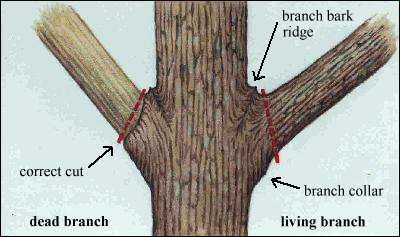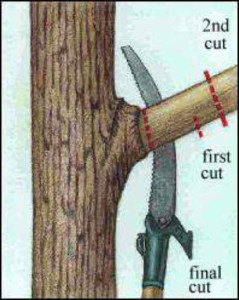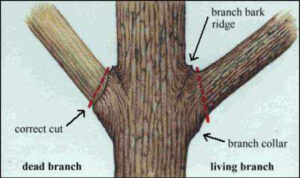February Horticultural Tasks
By Amy Wright
Annuals
If you’re thoroughly sick of winter by now, then start planning for color in your yard. Even if you have physical limitations, you can have a garden by having colorful planting containers. Window boxes, hanging baskets, and pots placed near your entrance can welcome visitors to your home. Limit your use of annuals to what can be easily planted in just a small amount of time, and use perennials that return each year to provide the bulk of your color.
Turf
Relax. Enjoy the break from the heat and mowing. Have you had a soil sample taken yet? Don’t procrastinate any longer!
Perennials
Now is the time to cut back ornamental grasses. If you’ve shied away from planting ornamental grasses because you think they’re all like pampass grass, take another look at the wonderful options ornamental grasses bring to your yard. Pampass grass is great for a larger space, and they do have sharp blades of grass that can cut you. But in the right place, pampass grass can make a statement. If you’re looking for a smaller option that has soft leaves, try Muhley Grass. Sweet grass baskets are sold to Charleston tourists, and are made from this grass. When in bloom at the end of the summer, the pink plumes look like floating cotton candy. Other great choices are all in the Miscanthus family of grasses such as ‘Adagio’, ‘Gracillimus’, ‘Yaku Jima’, and ‘Morning Light’. Choices for dwarf grasses include ‘Little Kitten’, ‘Hameln’, and ‘Mouldry’. Have you been to Riverbanks Zoo & Garden? I’ve planted a wonderful grass called ‘Karley Rose’. It’s very pretty! Look it up on line. There are many more choices besides these. You can’t beat how low maintenance and drought tolerant ornamental grasses are.
Roses
February is a perfect time for planting roses! Instead of buying cut roses for your loved one on Valentine’s Day, buy a rose bush to be enjoyed over a lifetime.
Shrubs
One of the best winter blooming shrubs is the Flowering Quince. For a small space you might want to try ‘Texas Scarlet’. These shrubs do have some barbs, so consider carefully where these get planted. You’ll not only be able to keep someone from walking in an area, but you’ll also be able to make Quince jelly from the fruit.
Trees
Tree Pruning
Why prune?
Improve tree structure or health, Accommodate human needs, Increase light penetration, provide a view
When to prune?
Prune when trees are dormant to minimize the risk of pest problems associated with wound entry and allow trees to take advantage of the full growing season to begin closing and compartmentalizing wounds. Most routine pruning and removal of weak, diseased, undesirable, or dead limbs can be accomplished at any time with little negative effect on the tree.
Pruning Cuts
In most cases, the preferred place to make a pruning cut is back to the parent branch or trunk, just to the outside of the branch collar or shoulder. There are times when it is necessary to reduce the length of a limb by cutting it back to a lateral branch. Trees do not respond well to this type of pruning cut as well because they cannot readily compartmentalize the wound. When possible it is best to avoid this type of cut. Large or heavy limbs should be removed using three cuts. The first cut undercuts the limb one or two feet out from the parent branch or trunk. A properly made undercut eliminates the chance of the branch “peeling” or tearing bark as it is removed. The second cut is the top cut, which is usually made slightly farther out on the limb than the undercut. (When cutting large limbs with a chain saw, often the top cut is made directly above the bottom cut to avoid the saw bar getting caught in the kerf.) This allows the limb to drop smoothly when the weight is released. The third cut is to remove the stub. When removing a dead branch, the final cut should be made just outside the collar of living tissue. If the collar has grown along a branch stub, only the dead stub should be removed.
A number of factors must be considered when pruning mature trees. These include the site; time of year, and the species, size, growth habit, vitality, and maturity of the tree. The amount of live tissue that should be removed depends on the tree size, species, and age, as well as the pruning objectives. As a general rule, mature trees are less tolerant of severe pruning than juvenile trees. Also, smaller cuts close faster and are more easily compartmentalized than large cuts. A widely accepted rule of thumb is never to remove more than one-fourth of a tree’s leaf-bearing canopy. Removing even a single, large-diameter limb can create a wound that the tree may not be able to close. The older and larger a tree becomes, the less energy it has in reserve to close wounds and defend against decay or insect attack. Further, the energy-producing capacity in relation to mass decreases as a tree matures. The pruning of large, mature trees is usually limited to the removal of dead branches or to reduce the severity of structural defects. Topping a tree involves cutting limbs back to a stub, bud, or lateral branch not large enough to assume apical dominance. Topping or heading back a tree is not a recommended pruning practice. Tree painting of the wound is not a recommended practice. Any pruning that needs to be done around or near power lines should only be done by the power company’s tree crews. You can call for assistance at 800-251-7234 then #, 4, and 0. Use a professional tree service for any pruning or tree removal that involves trees near buildings, or involves any major climbing.








Love the tree pruning article . Thanks